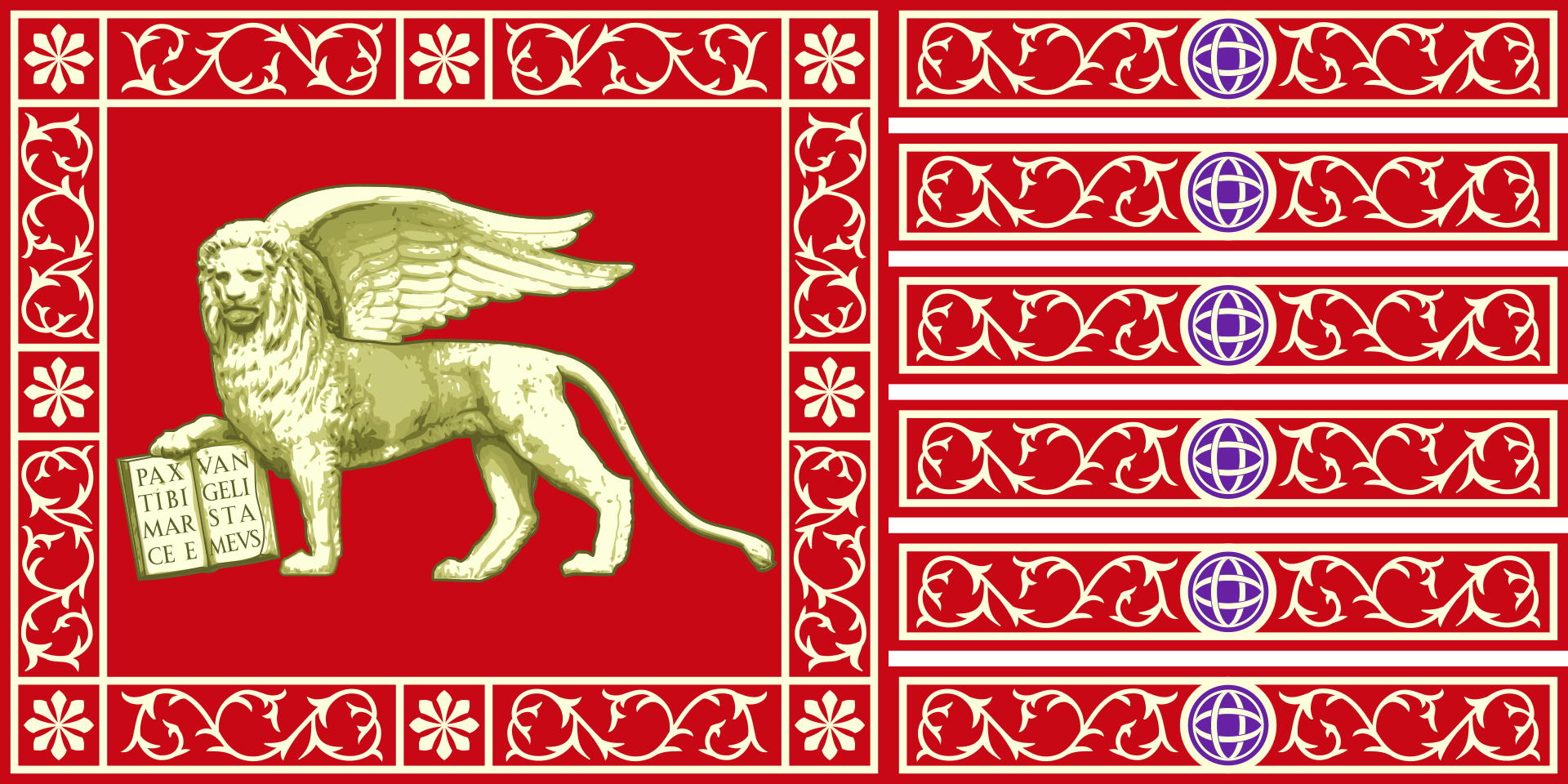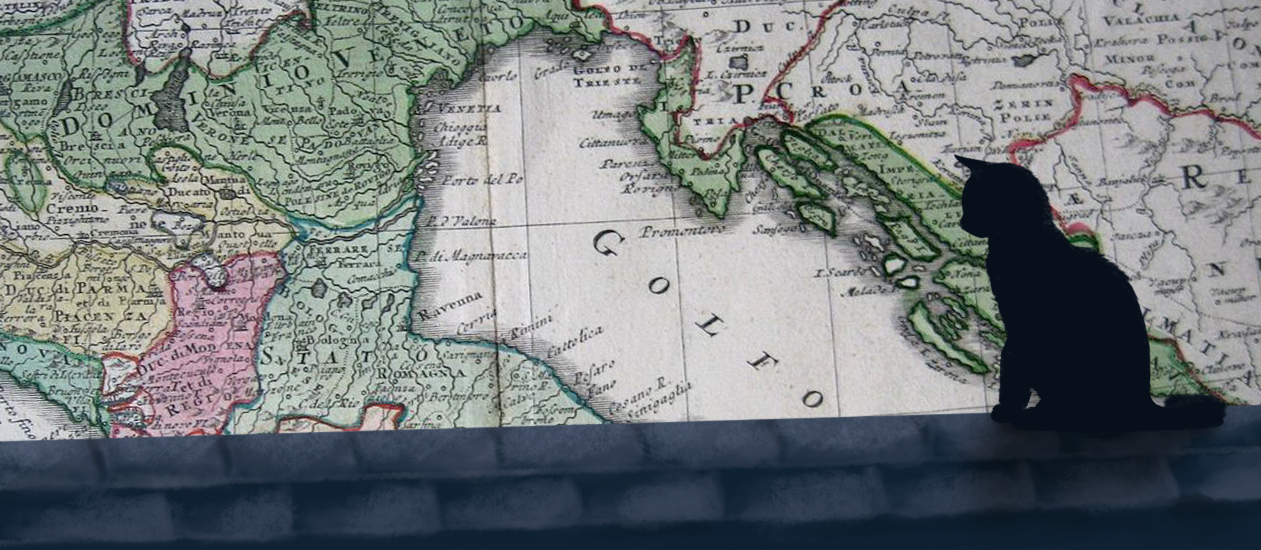Republic of Venice
Serenìsima Repùblica Vèneta
A swampy city sinking into the lagoon managed to become one of the most powerful nations in Europe.
History
Venice's history begins in the 5th centruy. Devastated by Germanic invasions, inhabitants of northeast Italy fled to the coast.
They established a collection of lagoon communities that stretched along the coast and banded together to repel invaders in the dying days of the Western Roman Empire. In 697, now part of the Byzantine Empire, the people of Venice elected their first leader. This man was confirmed in Constantinople as the dux, and became the first doge of Venice.
In 810, Venice was invaded by the Franks. This attempted conquest was repelled, bolstering the Venetian confidence and pride in their city. Meanwhile, the population grew steadily throughout the early medieval era due to its convenient location as a port. Ships came and went through its canals on their way to or from Europe.
Throughout the medieval era, Venice continued to flourish as a port and trading centre. The city became involved with the fourth crusade in 1199 when they agreed to build a fleet of ships to ferry crusaders to the holy land. However, once the army was assembled, the crusaders were unable to pay for the ships. To recoup their losses, Venice convinced the Crusaders to instead join a raid on Constantinople. They captured and looted the city, resulting in the partition of the Byzantine empire. Venice gained significant territories in the Aegean sea, giving birth to a maritime empire.
Over the next few centuries, Venice steadily grew as it seized more and more territory through military conquest. It also grew through the power of trade, as it controlled the flow of goods from western Europe into the Middle East. One of their most significant additions to the overseas territories was Egypt, which they took in 1355.
The republic suffered a downturn in the 16th century after the discovery of Terrre Ternguiré and the discovery of a sea route around Africa to facilitate trade. Not to be outdone, they created the Cairene Canal in 1601. This helped Venice re-establish itself as a dominent trading power, which it remains to the present.
Territories
Venice is a widespread nation. It began as a city-state and evolved into a broad web of possessions. They organize these poessions into three main groups:
- The Dogado, the territory under the Doge, which comprises the islets of the city itself and the original lands around the lagoon.
- The Stato da Mar (the Sea State), which comprises Egypt, territories along the eastern coast of the Adriatic sea, the Venetian Ionian Islands, Crete, the Aegean Archipelago, Cyprus and their many fortresses and outposts throughout the Mediterranean.
- The Stato di Terraferma (the Mainland State), which comprises their territory on the mainland in northern Italy.
These territories are not equal. The Dogado, as the centre of the republic, is by far the wealthiest. The rulers of the republic come from the patrician Rialto families within the original lagoon. The Stato da Mar are the most oppressed, with the highest taxes and least freedom. This is due to the higher amount of respect granted to the Stato di Terraferma, which are also native Italian.

Pax tibi Marce, evangelista meus
Founding Date
AD 697
Type
Geopolitical, Republic
Capital
Alternative Names
La Serenissima
Demonym
Venetian
Government System
Democracy, Parliamentary
Power Structure
Unitary state
Economic System
Market economy
Currency
Venetian Ducat
Official State Religion


